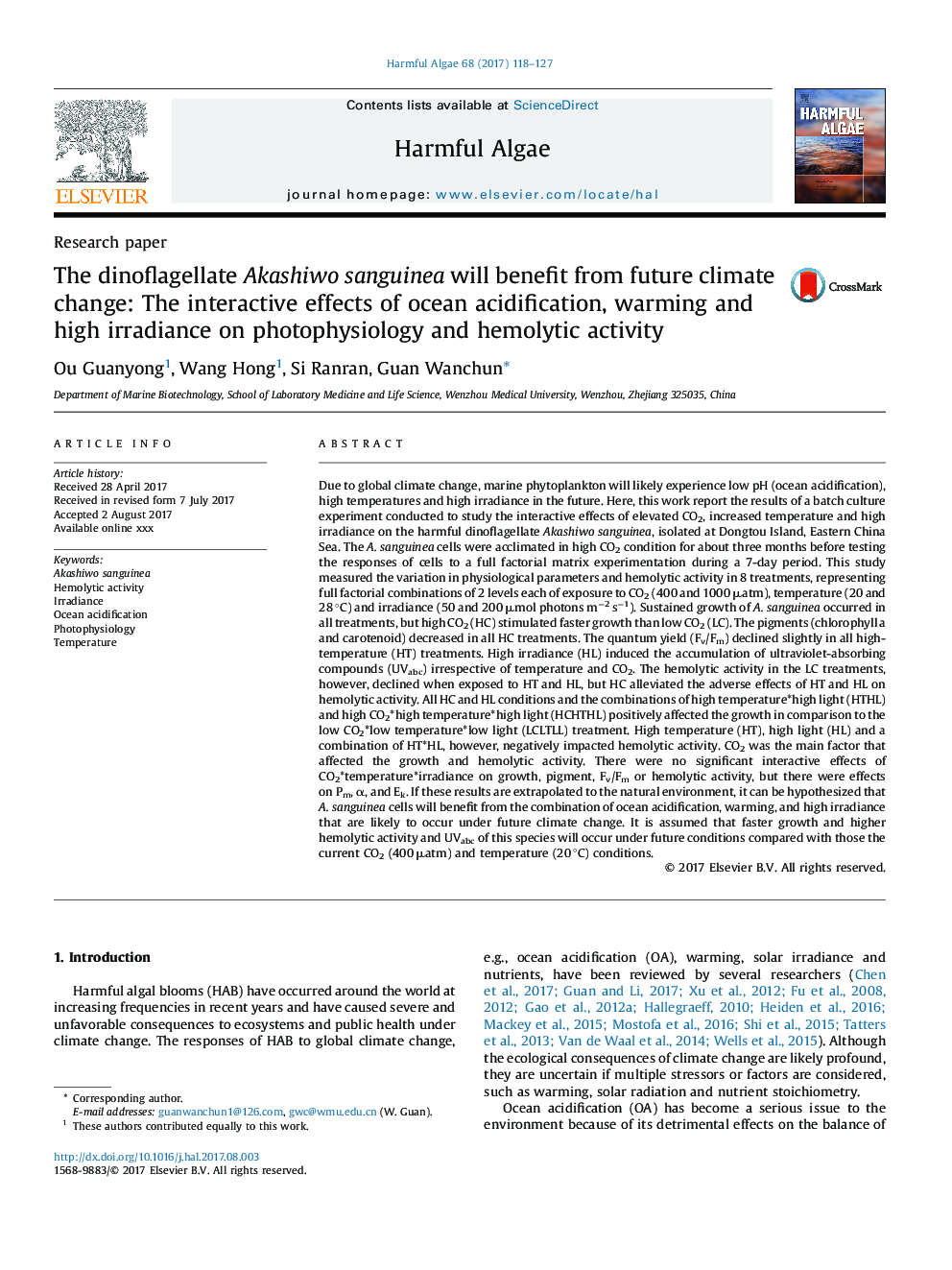| Article ID | Journal | Published Year | Pages | File Type |
|---|---|---|---|---|
| 5765759 | Harmful Algae | 2017 | 10 Pages |
Abstract
Due to global climate change, marine phytoplankton will likely experience low pH (ocean acidification), high temperatures and high irradiance in the future. Here, this work report the results of a batch culture experiment conducted to study the interactive effects of elevated CO2, increased temperature and high irradiance on the harmful dinoflagellate Akashiwo sanguinea, isolated at Dongtou Island, Eastern China Sea. The A. sanguinea cells were acclimated in high CO2 condition for about three months before testing the responses of cells to a full factorial matrix experimentation during a 7-day period. This study measured the variation in physiological parameters and hemolytic activity in 8 treatments, representing full factorial combinations of 2 levels each of exposure to CO2 (400 and 1000 μatm), temperature (20 and 28 °C) and irradiance (50 and 200 μmol photons mâ2 sâ1). Sustained growth of A. sanguinea occurred in all treatments, but high CO2 (HC) stimulated faster growth than low CO2 (LC). The pigments (chlorophyll a and carotenoid) decreased in all HC treatments. The quantum yield (Fv/Fm) declined slightly in all high-temperature (HT) treatments. High irradiance (HL) induced the accumulation of ultraviolet-absorbing compounds (UVabc) irrespective of temperature and CO2. The hemolytic activity in the LC treatments, however, declined when exposed to HT and HL, but HC alleviated the adverse effects of HT and HL on hemolytic activity. All HC and HL conditions and the combinations of high temperature*high light (HTHL) and high CO2*high temperature*high light (HCHTHL) positively affected the growth in comparison to the low CO2*low temperature*low light (LCLTLL) treatment. High temperature (HT), high light (HL) and a combination of HT*HL, however, negatively impacted hemolytic activity. CO2 was the main factor that affected the growth and hemolytic activity. There were no significant interactive effects of CO2*temperature*irradiance on growth, pigment, Fv/Fm or hemolytic activity, but there were effects on Pm, α, and Ek. If these results are extrapolated to the natural environment, it can be hypothesized that A. sanguinea cells will benefit from the combination of ocean acidification, warming, and high irradiance that are likely to occur under future climate change. It is assumed that faster growth and higher hemolytic activity and UVabc of this species will occur under future conditions compared with those the current CO2 (400 μatm) and temperature (20 °C) conditions.
Keywords
Related Topics
Life Sciences
Agricultural and Biological Sciences
Aquatic Science
Authors
Ou Guanyong, Wang Hong, Si Ranran, Guan Wanchun,
